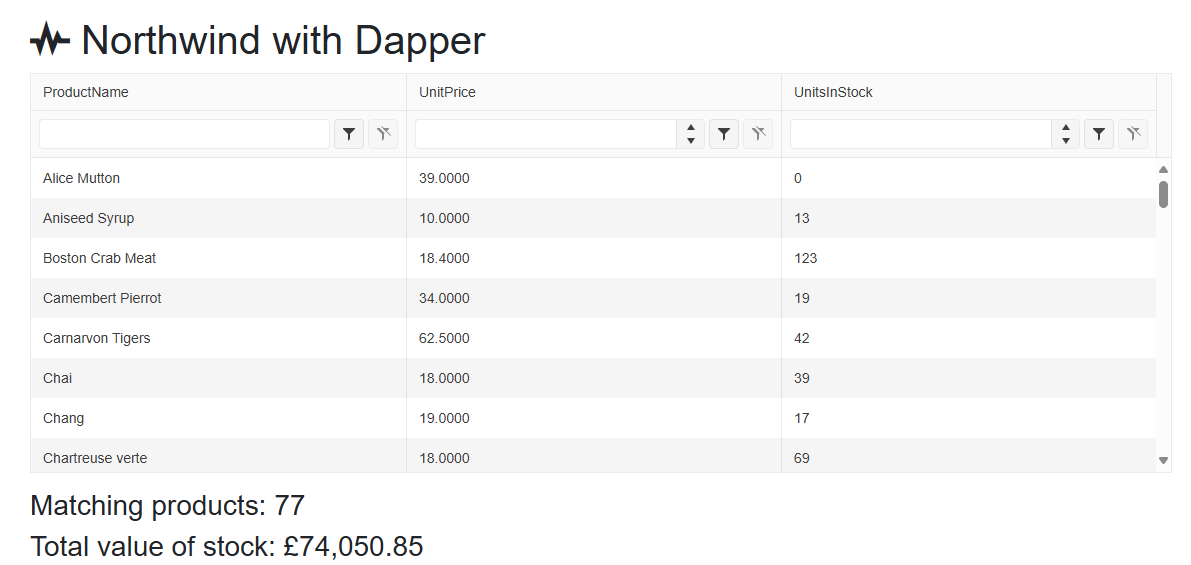Due to some performance issues, I decided to try using Dapper with the Telerik grid for Blazor. This post documents the (excellent) results, and shows a useful extension method that makes this very simple.
Dot Net What Not Posts
Having upgraded an ASP.NET Core project from .NET7 to .NET8, I got an error when trying to publish it. This blog post is my note to remind me how to fix it
Inspired by an amazingly concise implementation of John Conway’s game of Life that I saw written in APL, I decided to see if I could write Life in a single Linq expression.
This (rather long and rambling) post documents my attempts, my eventual success and the result that it made me want to learn APL!
I’ve been trying to write functional code for some time now, and still have the feeling that I’m not doing it correctly, especially when seemingly simple things don’t work. Having bumped into one specific issue over and over again, I decided to try and sort it out once and for all. Imagine a stupidly simple API endpoint that take a float, and returns the square root doubled. I have helper functions as follows… My API endpoint returns a string of the form “Result: 23.3” if successful, or an error if not. I wire these together as follows… This works as expected. Obviously, my real code would have more from clauses than this, but I’m trying to keep this simple. Now, suppose (which is more realistic) the helper functions were async, then I would need to modify my endpoint to look like this… Again, all works. However, now in the case…
Not rocket science, nor anything new or startling, but I seem to bump into this issue every now and then, and always have to go searching to remind myself how to fix it.
As a (somewhat lapsed but still interested) mathematician, I like to play around with interesting numbers. Well, I guess we all have our little foibles eh?
I decided to have a go at generating pairs of amicable numbers using Linq. This post explains what they are, and how I went about it.
A pointless badge displayed on a GitHub user profile page
Following a lot of frustration with the Azure portal, I discovered of a quick and easy way to transfer an Azure database to a regular SQL Server.
My attempt to write some C# that would differentiate mathematical expressions, following some Lisp code I saw in a book
Undocumented way of running a command before or after a publish in Visual Studio.










2 Comments